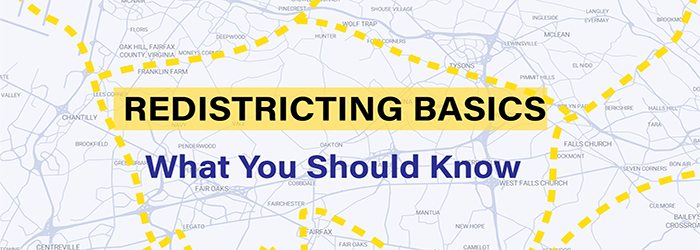
Learn more about redistricting and what Fairfax County did as part of its redistricting process.
What is Redistricting?
Redistricting is the process to draw new electoral boundaries. It makes sure election districts have roughly an equal number of people. Redistricting is required by law, and it takes place every 10 years after the Census.
What districts were affected?
Fairfax County drew new local electoral districts that apply to both the:
- Board of Supervisors
- School Board
Learn about the legal and policy requirements for redistricting.
Redistricting does not change school boundaries. The county also will not draw new election districts for lawmakers in the Virginia General Assembly and U.S. Congress. The Supreme Court of Virginia is currently responsible redrawing these electoral maps.
Why is redistricting important?
Redistricting is based on the idea of “one person, one vote.” By making sure districts have nearly the same number of people, it is the way to ensure you have fair and equal representation on the Board of Supervisors and School Board. It also affects who you vote for and where you vote based on how the electoral boundaries are drawn.
How were the new lines drawn?
The county appointed a community advisory group to draw proposed new districts with input from the public. The group sent its recommendations to the Board of Supervisors. There were 64 proposed maps submitted: 24 by the Redistricting Advisory Committee and 40 by the public. The board then held a Nov. 9 public hearing on the proposed new district boundaries and it adopted new local election districts on Dec. 7, 2021.
How was the public able to participate?
Public input was key to the process, and there were four ways the public was invited to participate:
- Drawing their own proposed election boundaries using the same online mapping tool used by the committee.
- Commenting on proposed district maps created by the committee or the public.
- Sharing input and comments with the Redistricting Advisory Committee, including where lines should be drawn, how many districts there should be and what was important to your community.
- Testifying at the Board Supervisors' Nov. 9 public hearing on proposed maps.

